Pelvic Floor Exercises
Updated:
The following pelvic floor exercises are frequently prescribed in physiotherapy clinical practice to improve strength and control of the pelvic floor muscles and to prevent or treat pelvic floor dysfunction which frequently occurs in women following childbirth and gynaecological surgery, and in men following prostate surgery.
In general, pelvic floor exercises are extremely important for patients who experience symptoms such as urinary or faecal incontinence or prolapse (sagging of internal organs i.e. where the uterus, bladder or bowel falls out of position). They may also be beneficial for patients suffering from lower back pain and in athletes with certain conditions affecting the pelvis (such as osteitis pubis).
The pelvic floor muscles sit deeply at the base of the abdomen and are primarily responsible for supporting the bowel, bladder (and uterus, in women) and controlling bowel and bladder function (such as allowing you to ‘hold on’ until an appropriate time and place). They also act to stabilise the pelvis (therefore impacting lower back stability) and are an important component of optimal sexual health.
Weakness of the pelvic floor can result in urinary and faecal incontinence, prolapse, poor pelvic stability and suboptimal sexual health.
You should discuss the suitability of these pelvic floor exercises with your physiotherapist prior to beginning them. Generally they should be performed 3 times daily provided they do not cause or increase symptoms.
Pelvic Floor Exercises – Neutral Spine
Begin your pelvic floor exercises by setting yourself up in a comfortable position that allows maximal relaxation of your global muscles, optimal isolated pelvic floor activation and allows you to maintain your spine in a neutral position.
For those who are new to pelvic floor exercises, it is generally most appropriate to begin your pelvic floor exercises whilst lying on your back or whilst sitting, in neutral spine (see below). Other alternative starting positions may include four-point kneeling or lying on your side.
Once you are confident with activating your pelvic floor in these starting positions, you can progress to other more functional positions such as standing or whilst walking etc.
Achieving Neutral Spine
Neutral Spine refers to the position whereby your spine is in optimal postural alignment (figures 1 – 4). Generally, neutral spine can be obtained by ensuring the following:
- Think about maintaining a tall, long spine with minimal effort
- There should be a straight line from your ears, to your shoulders, to your hips
- Your chin should be tucked in slightly with your eyes and nose facing forwards.
- Your shoulder blades should be back slightly
- Your upper back relatively straight
- There should be a slight curve in your lower back



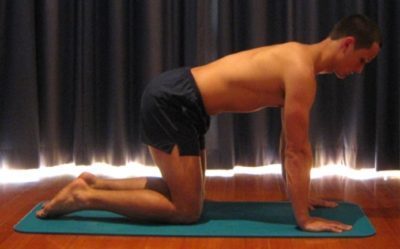
How to contract your pelvic floor muscles
Once you have positioned yourself in neutral spine and in an ideal starting position for you (i.e. generally lying on your back or sitting), identify the 2 or 3 parts of your pelvic floor as follows:
- The muscles that control the flow of urine – to identify how to contract these muscles for training, try to stop the flow of urine mid-stream next time you are urinating. Hold these muscles for a few seconds and then relax. (This should not be used as an exercise and should only be used for muscle identification).
- The muscles that control your anal sphincter – these muscles can be activated by tightening the muscles around your anus as though you are trying to stop the passing of wind. Squeeze and lift these muscles inwards and upwards. Hold these muscles for a few seconds and then relax.
- For women – the muscles that surround your vagina – the easiest way to tighten these muscles correctly is by inserting your fingers into the vagina and then try to squeeze them. Slowly pull your fingers out and use your pelvic floor muscles to resist. If this is not comfortable for you, try to tighten these muscles by squeezing and lifting the muscles in and around this opening. Hold for a few seconds and then relax.
When performing pelvic floor exercises, it is generally most beneficial to activate all parts of your pelvic floor simultaneously. This can be achieved by gently tightening the muscles around your back passage and at the same time squeezing and lifting the muscles around your bladder outlet (and vagina – in women) as though you are trying to stop the flow of urine.
Poor recruitment patterns – What to Avoid
When learning how to contract your pelvic floor muscles for the first time, it is relatively common for patients to perform trick movements or poor recruitment patterns (contracting muscles other than the pelvic floor). Some common errors / poor recruitment patterns that should be avoided include:
- Lifting or shrugging your shoulders
- Tightening other openings such as the eyes / mouth
- Global muscle contraction such as tightening the buttocks, thighs or abdominals (e.g. pulling your belly button in).
- Bearing down – i.e. some people mistakenly push down on their pelvic floor when performing pelvic floor exercises, which can exacerbate pelvic floor problems.
- Holding your breath
Initial Pelvic Floor Exercise
You should discuss the suitability of this initial pelvic floor exercise with your physiotherapist prior to commencing. Generally it should be performed 3 times daily provided it does not cause or increase symptoms.
Beginner pelvic floor activation
Begin lying or sitting in neutral spine (figures 1 or 2) with minimal muscular effort. Relax your global muscles and ensure you are breathing normally. Tighten the muscles around your back passage as if you are trying to stop the passing of wind. Slowly and gently squeeze and lift the muscles upwards and inwards and then relax. Repeat 5 – 10 times, 3 times daily.
Intermediate Pelvic Floor Exercise
You should discuss the suitability of this intermediate pelvic floor exercise with your physiotherapist prior to commencing. Generally it should be performed 3 times daily provided it does not cause or increase symptoms. The intermediate pelvic floor exercise can replace the initial pelvic floor exercise.
Prolonged pelvic floor activation
Begin this exercise in lying, sitting, 4 point kneeling or sidelying in optimal postural alignment (i.e. neutral spine – figures 1–4). Once you have mastered one position, it can be useful to practise in different positions to ensure your pelvic floor muscles can work in a variety of postures.
Relax your global muscles (including your thighs, buttocks and abdominals) and ensure you are breathing normally. Focus on activating all parts of the pelvic floor simultaneously by slowly and gently tightening the muscles around your back passage and at the same time squeezing and lifting the muscles around your bladder outlet (and vagina – in women) as though you are trying to stop the flow of urine. It should feel as though you are trying to draw your pelvic floor (saddle region) upwards and inwards away from your underwear. Hold this contraction for as long as you can and then relax for 10 seconds. Count the number of seconds you can hold each squeeze and lift. Repeat 3 – 10 times, aiming to slowly build up the duration of contraction and the number of repetitions until you can eventually perform 10 lots of 10 second holds, 3 times daily.
Ensure you feel a definite ‘let go’ as you relax your muscles in between contractions and if you become fatigued, do not practise and reinforce poor recruitment patterns. It is more effective to perform several short sessions throughout the day rather than one long session.
Advanced Pelvic Floor Exercises

Members Only ContentBecome a PhysioAdvisor Member to gain full access to this exclusive content. For more details see Become a Member. Already a member? Login Now
Pelvic Floor Exercises – Functional Progressions

Members Only ContentBecome a PhysioAdvisor Member to gain full access to this exclusive content. For more details see Become a Member. Already a member? Login Now
 Physiotherapy products for pelvic floor exercises
Physiotherapy products for pelvic floor exercises
-
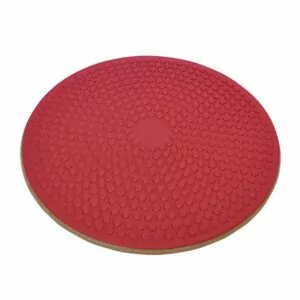 AllCare Wobble Board (Red – ACWOBRD)
AllCare Wobble Board (Red – ACWOBRD) -
 AllCare Adjustable Exercise Handles (Pair)
AllCare Adjustable Exercise Handles (Pair) -
 AllCare Band
AllCare Band -
 Fitness Ball Pro – Loumet
Fitness Ball Pro – Loumet -
 AllCare Tubing
AllCare Tubing -
 AllCare Spikey Massage Ball
AllCare Spikey Massage Ball -
 AllCare Foam Roller Round
AllCare Foam Roller Round -
 66 Fit Pilates Ball
66 Fit Pilates Ball -
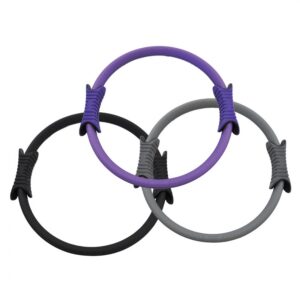 Allcare Pilates Ring
Allcare Pilates Ring -
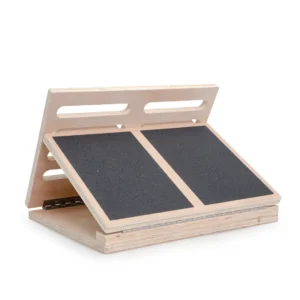 66Fit Wooden Adjustable Decline Board
66Fit Wooden Adjustable Decline Board -
 66 Fit Height Adjustable Aerobic Step
66 Fit Height Adjustable Aerobic Step -
 Comffit Pilates & Yoga Sticky Mat 6mm
Comffit Pilates & Yoga Sticky Mat 6mm -
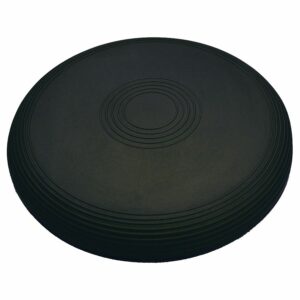 Lournet Stability Dura Disc
Lournet Stability Dura Disc -
 Body Blade
Body Blade -
 AllCare Vinyl Ankle Weight (Single)
AllCare Vinyl Ankle Weight (Single)
To purchase physiotherapy products to assist with pelvic floor exercises click on one of the above links or visit the PhysioAdvisor Shop.
 More Exercises
More Exercises
- What is Clinical Pilates?
- Pilates – Before You Start
- Beginner Pilates Exercises
- Intermediate Pilates Exercises
- Advanced Pilates Exercises
- Pilates Foam Roller Exercises
 Find a Physio
Find a Physio
Find a physiotherapist in your local area who can assist with pelvic floor exercises and ensure you are activating your pelvic floor muscles correctly. Ideally you should see a physiotherapist specialising in continence, pelvic floor dysfunction and pelvic floor retraining.
Become a PhysioAdvisor Member

Link to this Page
If you would like to link to this article on your website, simply copy the code below and add it to your page:
<a href="https://physioadvisor.com.au/exercises/strengthening-muscles/pelvic-floor-exercises”>Pelvic Floor Exercises – PhysioAdvisor.com</a><br/>PhysioAdvisor provides detailed physiotherapy information on Pelvic Floor Exercises and Kegel Exercises designed to strengthen the pelvic floor muscles.
Return to the top of Pelvic Floor Exercises.

